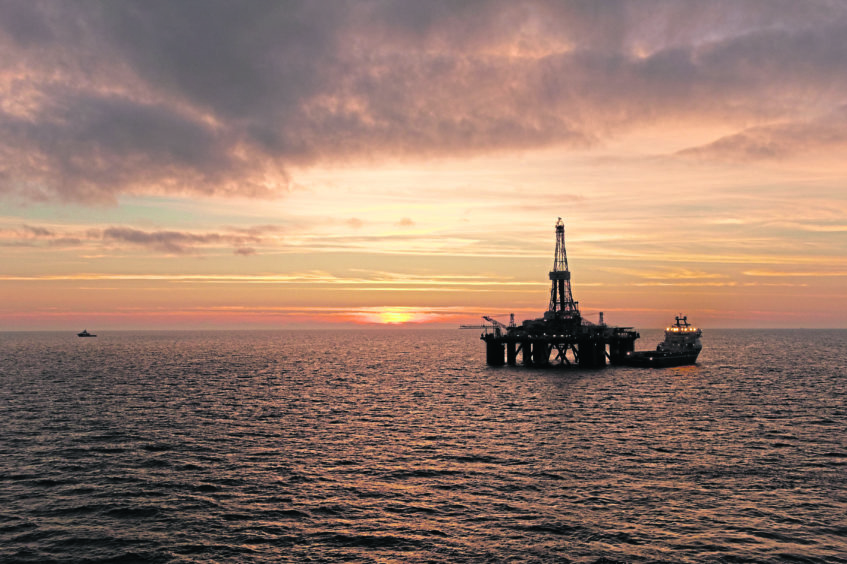
The North Sea should not run “into a pit of lowest price bidding” just because the supply chain is stressed with the oil price drop, according to the chief operating officer of Independent Oil and Gas (IOG).
Brent’s price plunge has arguably come at an advantageous time for IOG – just as it is in the process of tendering for a rig to drill five wells for its flagship “core” project in the southern North Sea (SNS).
With the drop in price, some operators have been forced to reassess their spending plans. That’s expected to feed through to the suppliers, with a potential scarcity of work bringing down contracting costs.
Mark Hughes, a 40-year industry veteran, recognises that an unhealthy supply chain “doesn’t help the industry one bit” and wants to take a longer-term approach as IOG prepares to hand out key awards like the rig deal.
He said: “I think a number of suppliers will be stressed. We will, as is not unusual, take commercial advantage of that but we also recognise that we don’t particularly want to engage in what’s been called a race to the bottom in terms of funding the supply chain.
“That doesn’t help the industry one bit if we effectively chase each other into a pit of lowest price bidding.”
Hughes added that IOG plans to work with suppliers on where there can be commercial advantages on both sides “in terms of longevity”.
Pending successful execution, it is hoped the firm can build long-term relationships with the contractors it settles on for the first phase of the core project for further work down the line.
Core is a multi-phase gas project with total proven and probable reserves of 410 billion cubic feet, comprised of several discoveries which will produce through two normally unmanned platforms.
As part of that, IOG intends to drill between 12-14 wells in the coming years, a “very commanding statement in terms of investment in the basin”, Hughes added.
IOG isn’t directly hit by the Brent crude price, being fully funded and concentrated on the gas market. However, gas prices have been compressed for some time due to factors like an LNG glut and a warm European winter.
Hughes expects that will have “played itself out” by the time production from the core project’s first phase is achieved by around July 2021.
“In principle, once phase one comes on production we expect gas prices to be much higher and closer to their norm,” he said.
IOG is well into preparation for that first phase, having reached
a final investment decision in October.
Regulatory approval is expected to be given this month for the environmental impact assessment and field development plan, which IOG will follow with the
award of the full contracts for platform construction and pipeline network.
The firm is already engaged with suppliers on the early designs but – as expected – they’re not saying yet who’s in the running.
That said, head of corporate finance James Chance promises there’s some “well-recognised, well-established names, with strong reputations” involved.
Getting to this point has been a long road for IOG, founded in 2011, which has built up a series of “somewhat stranded, unloved” prospects, and combined them to create its flagship project.
Key to that has been a series of fundraising efforts as well as a farm-out deal with CalEnergy Resources, owned by billionaire Warren Buffett’s Berkshire Hathaway investment firm.
Putting it all together was the purchase of the decommissioned Thames Pipeline in 2018, a deal for the “nominal sum” of just £1. After managing to prove there was still plenty of potential gas to flow through the line, the deal gave IOG a key route to market for its product.
Chance said: “That enabled us to build a portfolio of stranded or potentially sub-economic gas prospects in the vicinity of the pipeline which, when you put them all together with an owned piece of export infrastructure, you create something of substantial value.”
That chance to build up those assets was a key attraction for Hughes, who previously headed up Ineos’ Breagh project in the SNS as well as Clipper South, and bring healthy returns to shareholders.
One key point for investors in today’s climate is the energy transition – not a point that IOG has shied away from, with the new platforms expected to bring remarkably low emissions.
Fewer flights, remote operations, and gas production instead of oil all add up to an industry-leading position of 0.2kg of carbon dioxide per barrel produced.
“This is a really important factor for any company now and we want to demonstrate we’ve got clear leadership in this area within the industry,” Chance said.
“21 kg/CO2 burnt per barrel of oil equivalent is the 2018 UK North Sea average and I believe the Norwegian average is around nine.
“Companies would typically be happy to report any figure that’s less than five so to have a figure way less than one is right out there, right in the leadership of this, and that’s largely driven by the inherent nature of this project in terms of what we’re putting out offshore.
“It’s good for the country, good from an environmental perspective as well to stop us importing heavier fuel from outside.”
After this, phase two is just around the corner with FID targeted for the third quarter of next year and first gas expected in 2023.
IOG is also looking to find other incremental prospects to utilise, which will partly depend on the outcome of the Oil and Gas Authority’s 32nd licensing round.
Awards are expected in the second quarter of this year and IOG has “very high hopes of success”. It has been “disciplined” in its approach – only applying for three blocks – but it is an approach of “quality over quantity”.
There’s also its Harvey/Redwell area which, after some initially “disappointing” appraisal results last year, is showing encouraging signs with potentially 140bcf to play for. However, further technical and subsurface work is needed.
CalEnergy, IOG’s main partner, passed on an option to farm in to Harvey in February, but Chance said that doesn’t rule anything out for the future.
“Although Cal Energy passed on the original deal, which didn’t really fit the post-well reality, it was put together pre-well – that doesn’t mean to say there isn’t ongoing discussion about how they wish to come in at a point in the future,” he said.
IOG’s work plays into Hughes’ assessment that the SNS itself is experiencing a “rejuvenation” after some parts were “neglected”, with big discoveries coming intermittently like Cygnus and Premier Oil’s Tolmount.
He said: “The geology is very complex so I think there are parts that have been somewhat neglected.
“It is very interesting talking to the OGA who are encouraging new players, and established ones, to look again and try to get the maximum out of this basin.
“I think you are seeing a bit of a rejuvenation. Gas is starting to come much higher on companies’ portfolios in terms of investment so it is very much back in interest.
“Some of the majors have departed but there are still some household names that see the SNS basin as a key element to their future. Certainly for ourselves it will be.”



